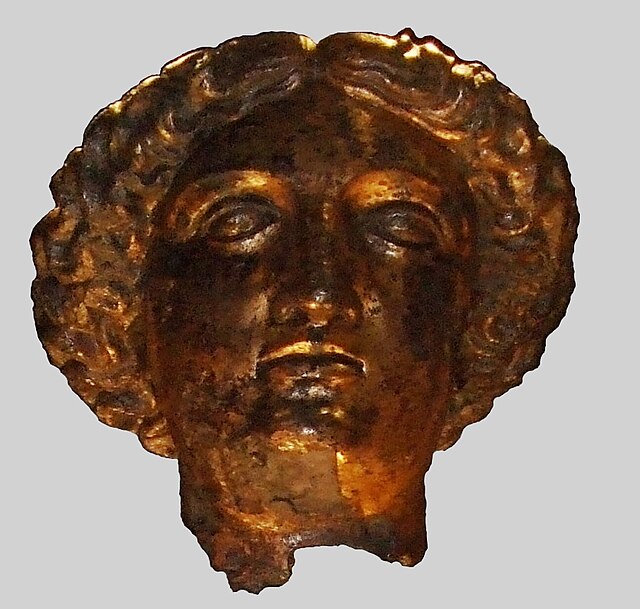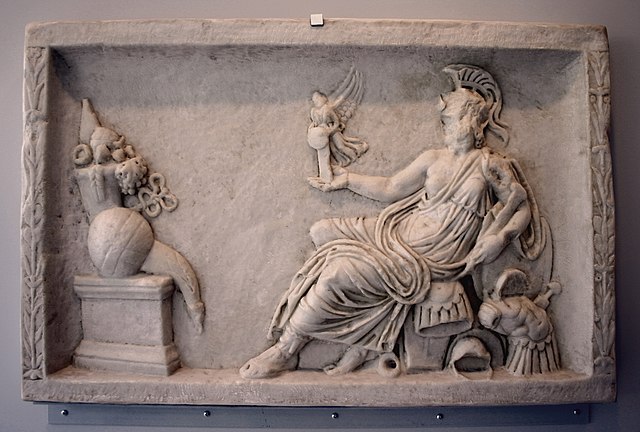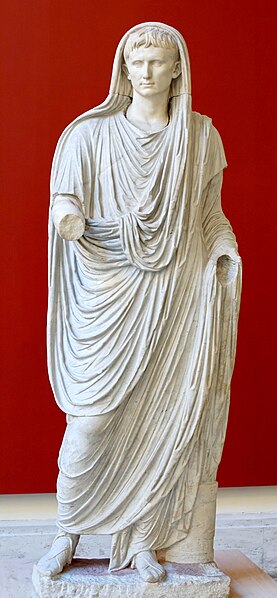Interpretatio graeca, or "interpretation by means of Greek [models]", refers to the tendency of the ancient Greeks to identify foreign deities with their own gods. It is a discourse used to interpret or attempt to understand the mythology and religion of other cultures; a comparative methodology using ancient Greek religious concepts and practices, deities, and myths, equivalencies, and shared characteristics.
A Roman wall painting showing the Egyptian goddess Isis (seated right) welcoming the Greek heroine Io to Egypt
A Roman fresco from Herculaneum depicting Hercules (from Etruscan Hercle and ultimately Greek Heracles) and Achelous (patron deity of the Achelous River in Greece) from Greco-Roman mythology, 1st century AD
Gilt bronze head from the cult statue of Sulis Minerva from the Temple at Bath
Jupiter Ammon (terracotta of Hellenistic style, 1st century AD)
Religion in ancient Rome consisted of varying imperial and provincial religious practices, which were followed both by the people of Rome as well as those who were brought under its rule.
Defaced Dea Roma holding Victory and regarding an altar with a cornucopia and other offerings, copy of a relief panel from an altar or statue base
Augustus as Pontifex Maximus (Via Labicana Augustus)
Cybele enthroned, with lion, cornucopia and Mural crown. Roman marble, c. 50 AD (Getty Museum)
Relief panel from an altar to Venus and Mars depicting Romulus and Remus suckling the she-wolf, and gods representing Roman topography such as the Tiber and Palatine Hill








